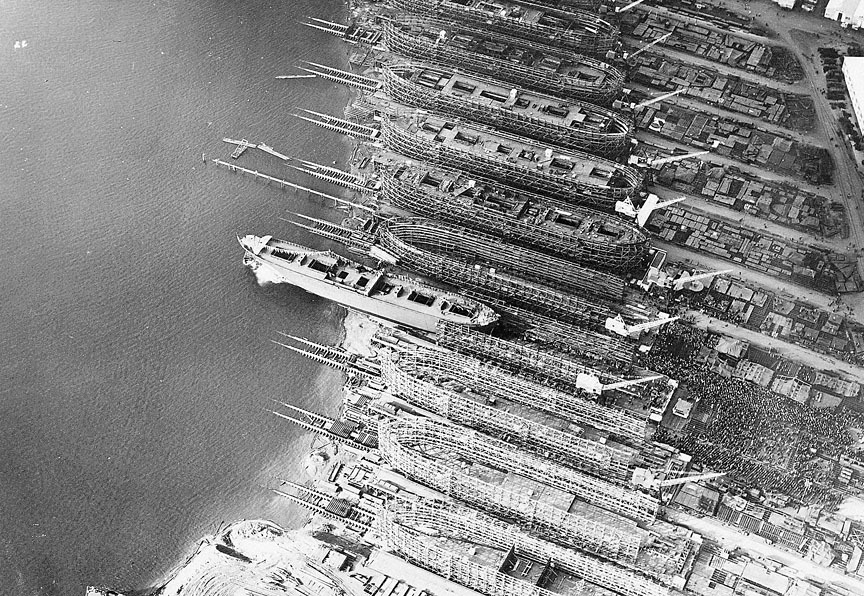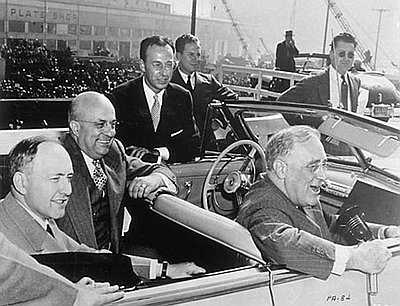- Catalog No. —
- OrHi 68758
- Date —
- circa 1943
- Era —
- 1921-1949 (Great Depression and World War II)
- Themes —
- Government, Law, and Politics, Transportation and Communication
- Credits —
- Oregon Historical Society
- Regions —
- Columbia River Portland Metropolitan
- Author —
- Unknown
Kaiser & Oregon Shipyards
In 1940, Henry J. Kaiser signed an agreement with the British government to build 31 cargo ships to aid that country in their war effort. After scouting several sites, Kaiser chose to construct a new shipbuilding yard in Portland, Oregon, and on May 19, 1941, his Oregon Shipbuilding Corporation launched the first Liberty ship, The Star of Oregon.
By the time the United States entered World War II, after the bombing of Pearl Harbor in December 1941, Kaiser already had connections with the U.S. Navy and the U.S. Maritime Commission. He also knew how to manage resources effectively, getting projects done on time and under budget. Among the testaments to Kaiser’s skills, he had organized the completion of Hoover Dam in half the time expected and his various social and business connections made his company a natural choice to win U.S. wartime shipbuilding contracts.
Kaiser opened a yard in Vancouver and began producing baby aircraft escort carriers in January 1942, and workers started on T-2 tankers at a new Swan Island yard in March of that same year. The company set a record when the Joseph N. Teal was built in ten days in the fall of 1942. In all, the Oregon Shipbuilding Yards delivered 455 ships to the U.S. Maritime Commission. Twenty of them were sent to the Soviet Union under the lend-lease program.
Further Reading:
Abbott, Carl. Portland: Planning, Politics, and Growth in a Twentieth-Century City. Lincoln, Nebr., 1983.
MacColl, E. Kimbark. The Growth of a City: Power and Politics in Portland 1915-1950. Portland, Oreg., 1979.
Written by Trudy Flores, Sarah Griffith, 2002.

